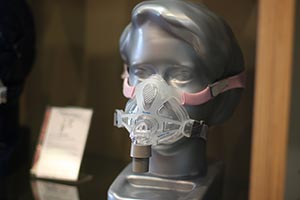Senior Reporter
Comment Period Extended on Sleep Apnea Driver Screening Until July 8

Federal regulators have extended until July 8 the comment period on an advanced notice of proposed rulemaking requesting certain information regarding the evaluation of safety sensitive personnel for moderate-to-severe obstructive sleep apnea.
In a March 8 announcement, the Federal Motor Carrier Safety Administration and Federal Railroad Administration said they are seeking public input on the effects of screening, evaluating and treating commercial motor vehicle drivers and rail workers for obstructive sleep apnea.
A June 8 Federal Register posting said the comment period extension was the result of a May 18 request by the Owner-Operator Independent Drivers Association, which said it needed more time to review the results from the American Transportation Research Institute commercial driver survey on sleep apnea issues.
“In its request, OOIDA stated that the survey will provide a comprehensive look at the impact of OSA screening and treatment within the motor carrier community that is beyond the information which any one carrier can provide,” FMCSA said. “Furthermore, with this data in hand, OOIDA will be able to present a better analysis of the information requested by the [Advance Notice of Proposed Rulemaking].”
ATRI released its survey results that included the costs to drivers for sleep apnea tests on May 26.
“FMCSA and FRA believe that other potential commenters to this rulemaking will benefit from an extension as well,” FMCSA said.
The joint ANPRM is the first step in both agencies considering whether to propose sleep-apnea requirements.
The agency has since conducted public listening sessions on sleep apnea in Chicago, Los Angeles and Washington.
“It is imperative for everyone’s safety that commercial motor vehicle drivers and train operators be fully focused and immediately responsive at all times,” Transportation Secretary Anthony Foxx said in a recent statement. “DOT strongly encourages comment from the public on how to best respond to this national health and transportation-safety issue.”

